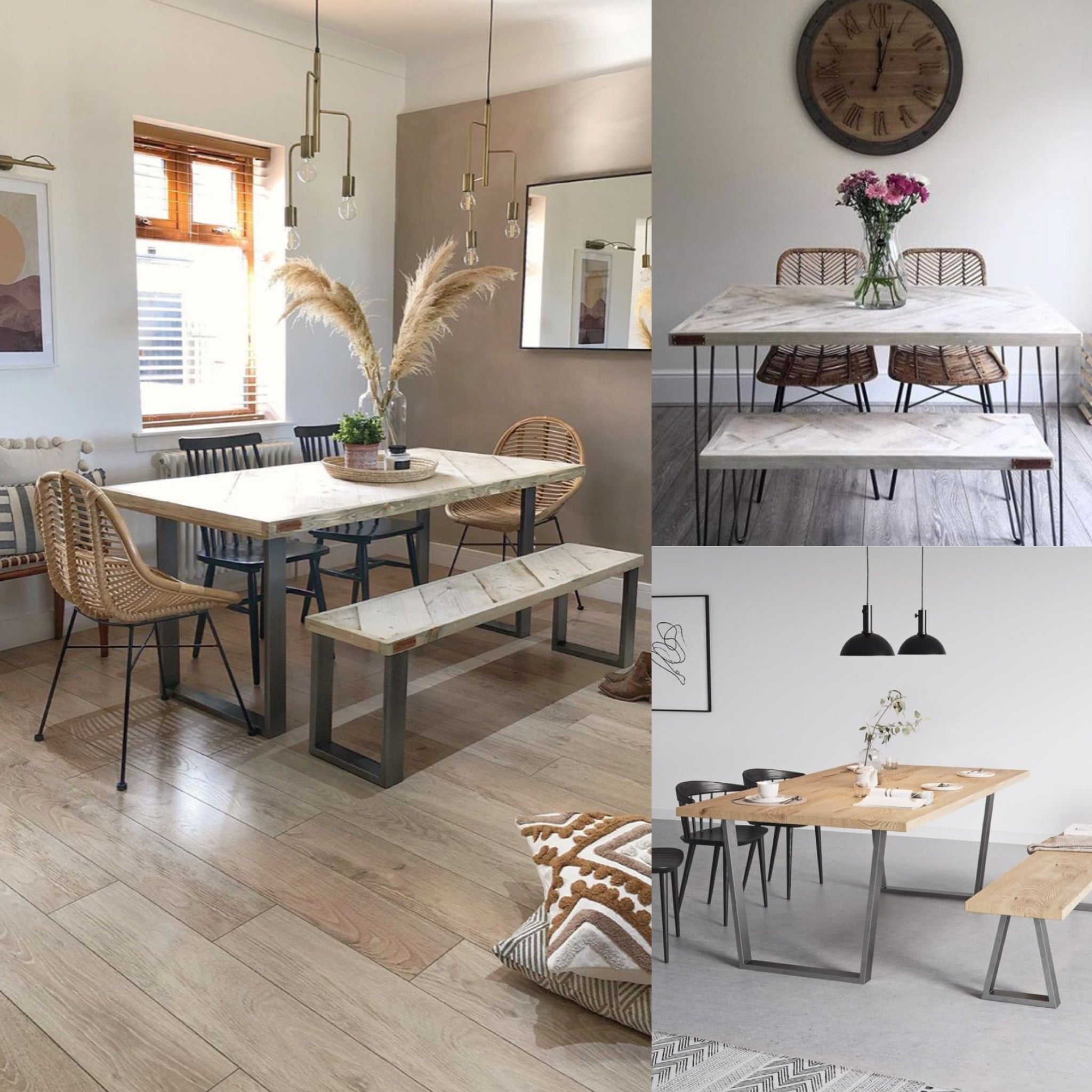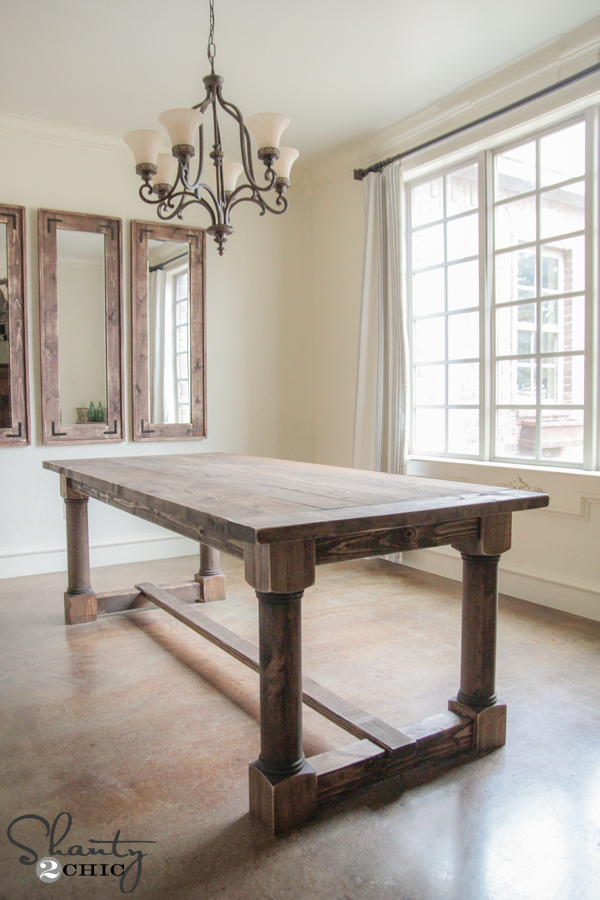From Traditional to Modern: Locate the Suitable Dining-room Table Legs for Your Design
While classic styles such as cabriole and transformed legs stimulate a sense of classic class, modern styles like hairpin and geometric alternatives present a chance for striking visual interest. As you think about these components, the question stays: just how can you seamlessly integrate these varied leg styles to produce an unified eating experience?
Understanding Table Leg Styles
The range of dining-room table leg designs can substantially influence both the aesthetics and functionality of the space. Each leg style contributes special practical features and visual components, satisfying varied design preferences and use needs. Recognizing these designs is crucial for selecting the right table that straightens with your general indoor style vision.
For circumstances, tapered legs offer a tidy, classic appearance that can boost an area's beauty, while pedestal bases offer security and make the most of legroom, making them optimal for smaller sized rooms. Hairpin legs, a characteristic of mid-century modern design, present a commercial flair, enabling an airy, open feeling. Trestle legs stimulate rustic charm, providing robust assistance and a feeling of timelessness.
Furthermore, the selection of materials plays a significant duty. Wood legs can bring warmth and texture, whereas steel choices frequently share a smooth, modern vibe. Inevitably, recognizing table leg styles is essential for developing a cohesive eating location that shows individual style while ensuring functionality and convenience. By thoughtfully taking into consideration these elements, you can boost both the aesthetic and functional charm of your eating area.
Conventional Table Leg Options
When picking dining-room table legs, conventional alternatives commonly personify timeless beauty and craftsmanship. These styles reflect a rich heritage and a commitment to high quality, making them excellent for those who appreciate timeless visual appeals.
One of one of the most legendary conventional leg designs is the cabriole leg, identified by its elegant bent form. This design commonly includes attractive makings and is most frequently found in Queen Anne and Chippendale furniture. One more prominent choice is the turned leg, which flaunts a collection of smooth, rounded forms that give a timeless appearance while keeping stability.
Furthermore, the straight leg, while simple, offers a durable and unadorned framework that can mix seamlessly with a variety of tabletop styles. For those drawn to ornate outlining, claw-and-ball feet legs stimulate a sense of splendour and can offer as a stunning prime focus in any type of dining area.
Last but not least, pedestal bases, although not purely legs, provide a different conventional option that enables adequate legroom and can be perfectly sculpted. Each of these conventional leg styles adds to the total setting of a dining room, weding function with visual allure.

Modern Table Leg Styles
Modern table leg styles offer a varied series of designs that highlight ingenious materials and clean lines. These layouts typically prioritize capability while serving as striking centerpieces within a dining area. Minimalist visual appeals prevail, with legs crafted from materials such as metal, glass, and crafted timber, which add to a airy and modern feel.
One popular style is the barrette leg, characterized by its slim, conical structure that supplies security without frustrating the table top (dining room table legs). This style is commonly found in mid-century modern furniture and can effortlessly complement numerous dining table forms. Another pattern is using geometric forms, where legs may tackle unbalanced or angular kinds, adding visual rate of interest and a touch of virtuosity

Mixing Styles for One-of-a-kind Areas
Typically, home owners seek to produce published here distinct eating rooms that reflect their personal design by mixing various design aspects. This method enables for the unification of diverse looks, resulting in an unified yet distinctive atmosphere. Combining a rustic wooden table with streamlined, contemporary metal legs can develop a distinctive contrast that elevates the space's general appeal.
Additionally, incorporating vintage table legs with contemporary table tops can evoke a feeling of background while preserving a modern-day perceptiveness. Such combinations not just showcase specific preference but additionally encourage creative thinking, enabling homeowners to curate a space that feels both individual and inviting.
Shade plays a crucial function in this blending procedure; selecting table legs that enhance or contrast with the existing shade scheme can improve aesthetic rate of interest. As an example, whitewashed legs can soften the boldness of a dark table surface area, creating a balanced visual.
Tips for Choosing the Right Legs
Picking the right table legs is necessary for achieving both performance and visual allure in your dining room. Begin by thinking about the total design of your room. Standard setups take advantage of legs that feature complex makings or turned designs, while contemporary areas might ask for sleek, minimalist styles.
Following, examine the elevation and security of the legs. dining room table legs. Conventional eating tables vary between 28 to 30 inches in height, so guarantee the legs enhance this measurement for comfort. Furthermore, durable products, such as wood or steel, can enhance stability and durability
Examine the leg form too-- options consist of right, tapered, or stand layouts. Straight legs offer a classic look, while tapered legs can add a touch of sophistication. Pedestal bases offer enough legroom and are excellent for smaller sized areas.
Verdict
In summary, picking the suitable eating space table legs requires careful factor to consider of both modern and traditional designs. By balancing leg design, elevation, and material with the total decor, a cohesive and welcoming ambience can be achieved.
The selection of dining space table leg styles can significantly affect both the appearances and capability of the area. Ultimately, comprehending table leg designs is vital for developing a cohesive dining location that reflects individual style while making sure practicality and convenience.One of the most famous standard leg styles is the more helpful hints cabriole leg, identified by its graceful rounded shape. Straight legs provide a timeless look, while conical legs can include a touch of beauty.In recap, choosing the perfect eating area table legs requires cautious check here factor to consider of both typical and modern styles.